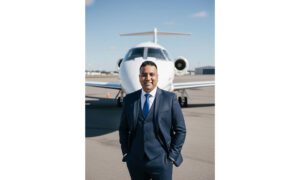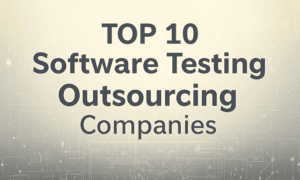Technology has become the backbone of modern civilization, driving change in every sector—from healthcare and education to communication, manufacturing, and entertainment. Over the past two decades, we’ve witnessed a transformation unlike any other in human history. Artificial intelligence, automation, quantum computing, biotechnology, and sustainable energy systems are redefining how we live, work, and think. As innovation accelerates, the question is no longer whether technology will shape the future—but how we can harness it responsibly to build a better world.
1. Artificial Intelligence: The Core of Modern Innovation
Artificial Intelligence (AI) is one of the most powerful technologies of the 21st century. Once confined to science fiction, AI now powers voice assistants, recommendation systems, autonomous vehicles, and even creative tools that write, compose music, or design graphics.
AI systems work by analyzing massive datasets to recognize patterns, make predictions, and learn from outcomes. This learning capability—often called machine learning—has opened new frontiers in nearly every industry.
In healthcare, AI algorithms analyze medical scans and detect diseases such as cancer at early stages, often with higher accuracy than human specialists. In finance, AI detects fraudulent activity and automates trading systems that respond to real-time market changes. Even in agriculture, AI-driven drones and sensors optimize irrigation and crop management, improving yield and sustainability.
However, AI’s rapid development also raises ethical questions. Data privacy, algorithmic bias, and job displacement are major concerns. As AI online casino slots become more autonomous, governments and organizations are now focusing on establishing regulations to ensure transparency and accountability. The challenge ahead is balancing technological progress with human-centered values.
2. Automation and the Future of Work
Automation—the use of machines and software to perform tasks without human intervention—has been reshaping industries for decades. Robotics and AI are now merging to create highly efficient systems that can manufacture products, analyze information, and even make decisions.
In manufacturing, robotic arms assemble cars and electronics with precision and speed. In logistics, automated warehouses run by robots handle inventory and shipments faster than ever before. In offices, software “bots” perform repetitive digital tasks such as data entry, reporting, and analysis.
While automation boosts productivity, it also disrupts traditional employment patterns. Some roles are being replaced by machines, while others are evolving into hybrid human-machine collaborations. Experts predict that while millions of jobs may be lost to automation, new ones will also emerge—especially in technology management, data science, and creative sectors.
The future of work will likely focus on adaptability. Continuous learning, digital literacy, and emotional intelligence will become essential skills. As automation handles routine tasks, human workers can focus on creativity, empathy, problem-solving, and innovation—areas where machines still lag behind.
3. Quantum Computing: Unlocking Unprecedented Power
Quantum computing represents the next major leap in computational technology. Traditional computers use bits—either 0 or 1—to process information. Quantum computers use qubits, which can represent both 0 and 1 simultaneously through a principle known as superposition. This allows them to perform complex calculations exponentially faster than classical computers.
Though still in early development, quantum computing has immense potential. It could revolutionize drug discovery by simulating molecular interactions at the atomic level, optimize global supply chains, and solve encryption problems that are currently considered unbreakable.
Tech giants and research institutions worldwide are racing to achieve “quantum supremacy”—the point where a quantum computer can perform a calculation no classical computer can feasibly JetX game. While commercial applications are still a few years away, progress is accelerating, and the impact could be as profound as the invention of the internet itself.
4. Biotechnology and Human Enhancement
Advancements in biotechnology are blurring the line between biology and technology. Genetic engineering tools like CRISPR-Cas9 allow scientists to modify DNA with unprecedented accuracy, potentially curing genetic disorders and preventing inherited diseases.
In healthcare, wearable devices and implanted sensors continuously monitor heart rate, glucose levels, and other vital signs, providing real-time health data to both patients and doctors. Meanwhile, regenerative medicine aims to grow new organs from stem cells, offering hope for millions awaiting transplants.
The field of “biohacking” is also gaining attention—where individuals use technology to enhance physical or cognitive abilities. From neural implants to exoskeletons, human augmentation is moving from science fiction to scientific reality.
Yet, biotechnology brings significant ethical and societal challenges. Questions of genetic privacy, designer babies, and access inequality must be addressed to ensure these advancements benefit humanity as a whole.
5. The Internet of Things (IoT): Connecting Everything
The Internet of Things (IoT) refers to the growing network of interconnected devices—from smart thermostats and refrigerators to industrial sensors and city infrastructure. These devices collect and exchange data, making systems more efficient and responsive.
In smart homes, IoT enables automation of lighting, security, and energy usage. In cities, IoT supports smart traffic management, waste reduction, and environmental monitoring. In industries, connected sensors track equipment performance, reducing downtime and maintenance costs.
However, increased connectivity also means greater cybersecurity risks. Each connected device can become a potential entry point for cyberattacks. Protecting IoT ecosystems requires robust encryption, constant monitoring, and international cooperation on security standards.
6. Renewable Energy and Sustainable Tech
As the effects of climate change intensify, the demand for sustainable technology has never been higher. Renewable energy—particularly solar, wind, and hydroelectric power—is rapidly becoming more efficient and affordable. Innovations in battery storage, such as solid-state batteries, are making it possible to store renewable energy for longer periods, addressing one of the key limitations of clean power sources.
Electric vehicles (EVs) are another major step toward sustainability. With improvements in range, charging speed, and affordability, EV adoption is expected to surge in the coming decade. Meanwhile, advancements in green computing, recyclable electronics, and energy-efficient data centers are helping the tech industry reduce its carbon footprint.
Sustainability is no longer a niche concept—it’s becoming an integral part of innovation. Companies worldwide are investing in technologies that balance progress with environmental responsibility.
7. Cybersecurity and Digital Trust
As our lives move increasingly online, cybersecurity has become a top priority. From personal data and banking information to national defense systems, everything now depends on digital infrastructure.
Cybercriminals are using more advanced tactics, including AI-driven attacks and ransomware schemes that can cripple organizations. In response, cybersecurity technologies are also evolving. AI-based threat detection, blockchain-based data integrity systems, and biometric authentication are becoming key components of digital protection.
Digital trust is now a crucial factor in business and governance. Transparency in data usage, strong encryption, and user education will play a central role in safeguarding the digital future.
8. The Human Side of Technology
While technology continues to transform society, it also affects how we think, communicate, and relate to one another. Social media, virtual reality, and digital communication tools have redefined social interaction, bringing both connection and complexity.
The rise of “digital well-being” movements reflects growing awareness about balancing technology use with mental and physical health. As artificial intelligence and automation reshape work and leisure, humanity faces an important question: How do we ensure that technology serves people, rather than the other way around?
The answer lies in thoughtful design, ethical innovation, and inclusive policies that prioritize human dignity and creativity.
Conclusion: Building a Responsible Technological Future
Technology is a double-edged sword—it holds the power to solve humanity’s greatest challenges, but also to create new ones if misused. The next phase of innovation will depend not just on breakthroughs in computing or science, but on our ability to guide these changes responsibly.
From artificial intelligence and quantum computing to biotechnology and sustainable energy, the future of technology is filled with possibility. But as machines grow smarter and systems become more autonomous, the ultimate measure of progress will be how well we integrate these tools into a fair, sustainable, and human-centered world.
In the end, technology’s true potential lies not in replacing people, but in empowering them—to learn more, connect deeper, and build a future that benefits all.

































